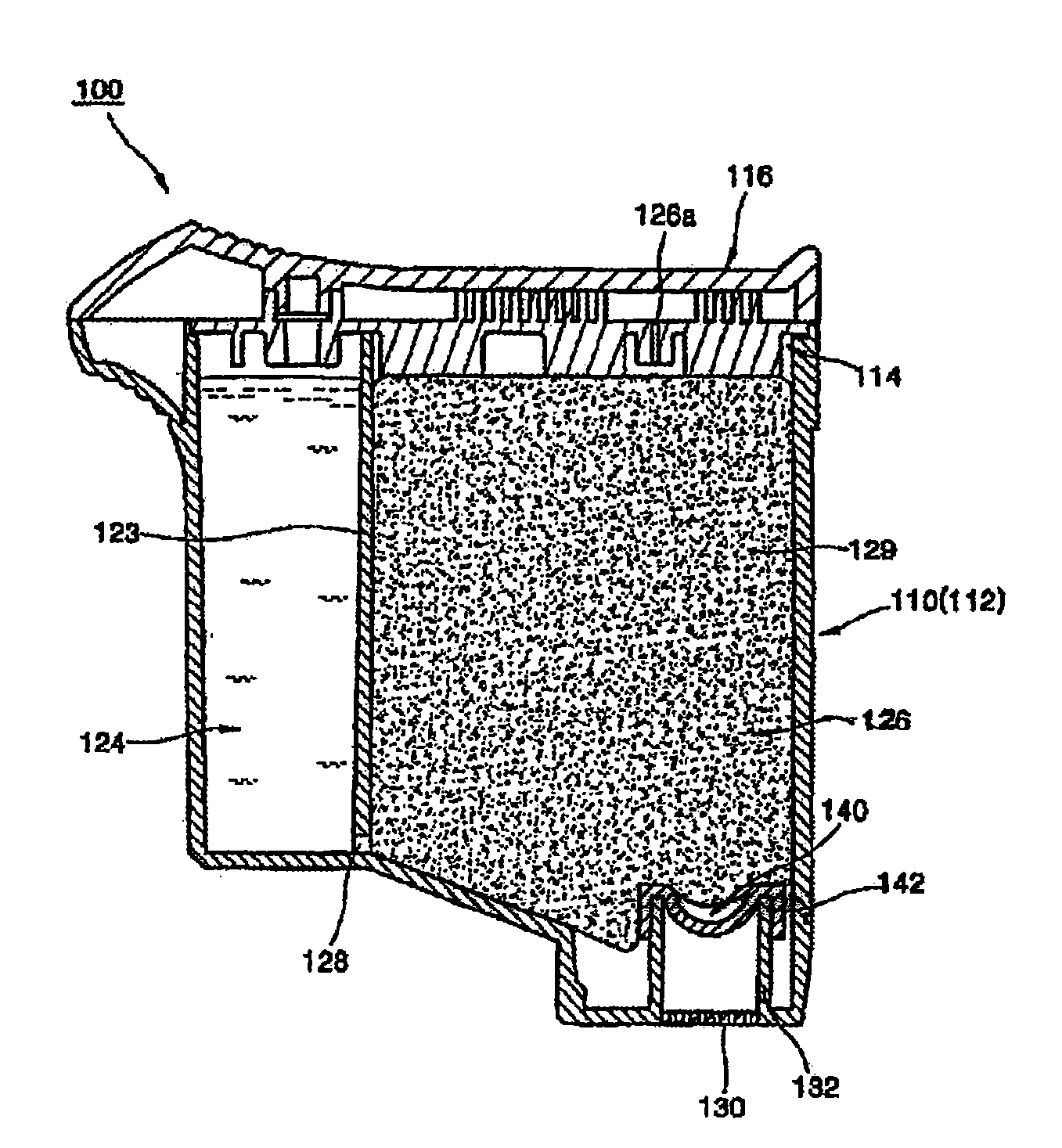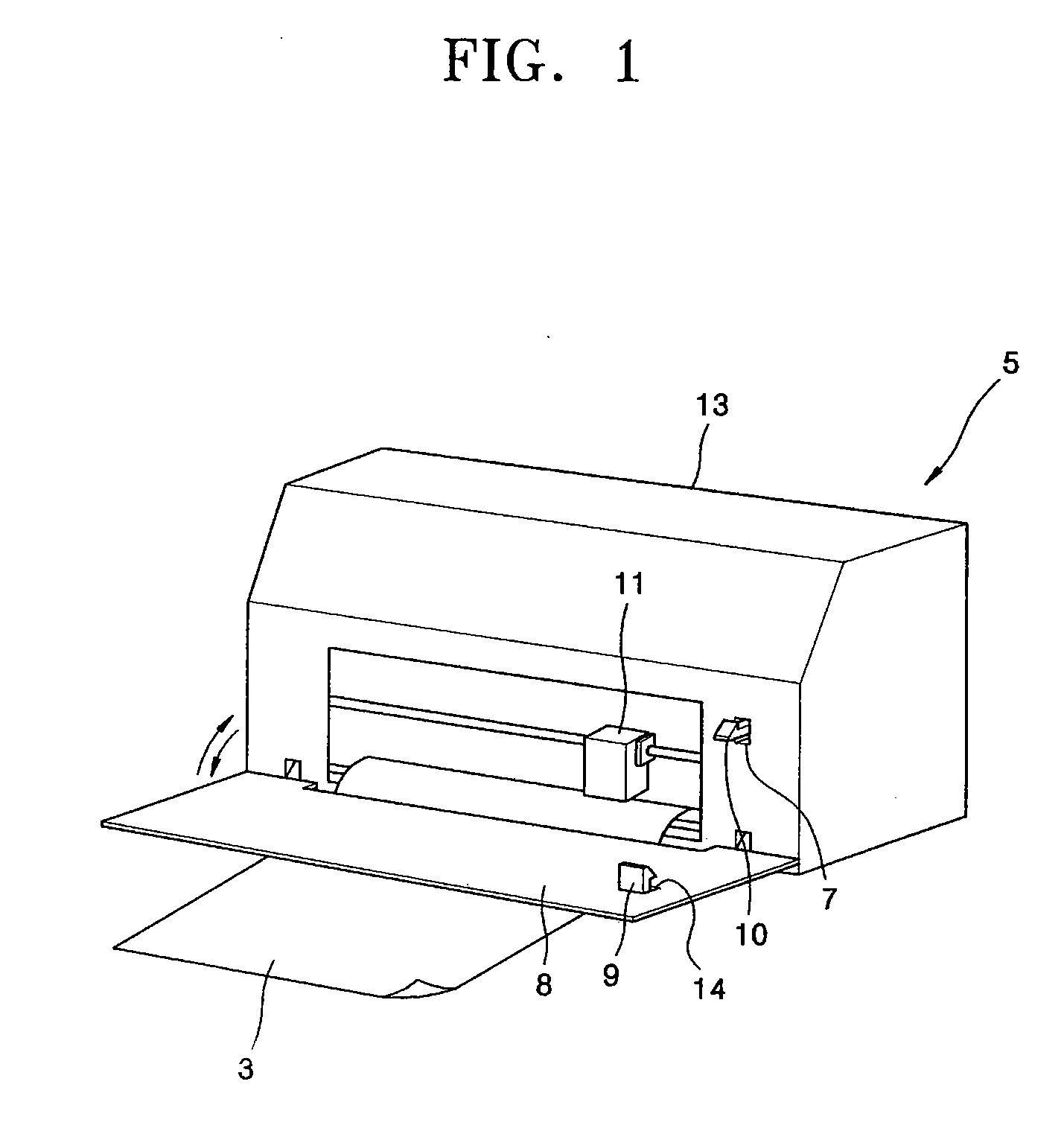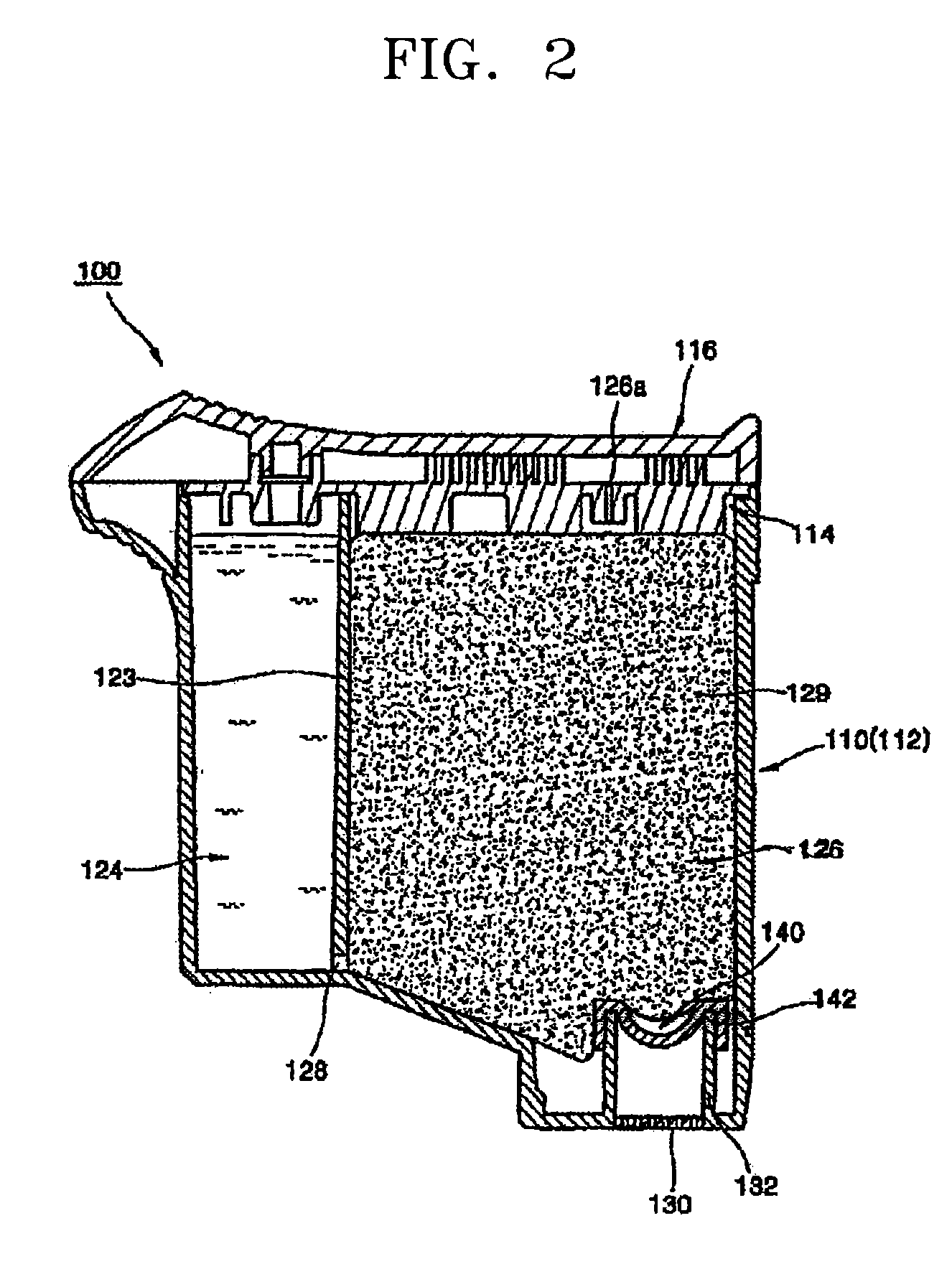Ink composition including chromophore-mimic additive and inkjet printer cartridge and inkjet recording apparatus including the same
a technology of additives and additives, which is applied in the field of inkjet printer cartridges and inkjet recording apparatuses including chromophoremimic additives, can solve the problems of insufficient use of colorants, inability to store colorants for a long time, and weak durability against light, so as to improve the durability of printed images, uniform viscosity, and high optical density
- Summary
- Abstract
- Description
- Claims
- Application Information
AI Technical Summary
Benefits of technology
Problems solved by technology
Method used
Image
Examples
examples
[0086] Examples 1 through 9 and Comparative Examples 1 through 5 were prepared as described in Table 1. In Examples 1 through 9 and Comparative Examples 1 through 5, macro-chromophore-containing colorants and chromophore-mimic additives below were used.
Macro-Chromophore-Containing Colorants
[0087] Macro-chromophore-containing colorant 1:
Macro-chromophore-containing colorant 1 was synthesized with reference to example 1 of U.S. Pat. No. 6,648,952.
[0088] Macro-chromophore-containing colorant 2 (Cabot 200 (Cabot)):
[0089] Macro-chromophore-containing colorant 3 (COJ250 (Cabot)):
[0090] Macro-chromophore-containing colorant 4 (C.I. Direct Black 62 (Standard Dyes Inc.)).
[0091] Macro-chromophore-containing colorant 5:
Macro-chromophore-containing colorant 5 was synthesized according to the method in example 1 of EP 0 468 648, except that 2,5-dimethyl-1,4-phenylenediamine was used instead of phenylenediamine.
Chromophore-Mimic Additives
[0092] Chromophore-mimic additive 1:
[0...
experiment 1
orage Stability of Ink Compositions (1)
[0099] 100 mL of each of the ink compositions prepared according to Examples 1-9 and Comparative Examples 1-5 was placed into individual heat resistant vials. The openings of the vials were closed and the closed vials were stored in an incubator at 60° C. After being left for 2 months, it was observed whether there were precipitates on the bottom of the vials or a layer separation occurred. The results are illustrated in Table 2 below. The results were evaluated according to the following criteria:
[0100]◯: There were no precipitates and no layer separation occurred.
[0101]Δ: There were no precipitates but a layer separation occurred.
[0102] X: There were precipitates.
experiment 2
orage Stability of Ink Compositions (2)
[0103] 100 ml of each of the ink compositions prepared according to Examples 1-9 and Comparative Examples 1-5 was placed into individual heat resistant vials and the openings of the vials were closed. After being left at 25° C. for 3 months, the viscosity of each of the ink compositions was measured. The results are illustrated in Table 2 below. The results were evaluated according to the following criteria:
[0104]⊙: viscosity after being left≦initial viscosity X 1.2.
[0105]◯: initial viscosity X 1.2
[0106]Δ: initial viscosity X 2.0
[0107] X: viscosity after being left>initial viscosity×3.0.
PUM
| Property | Measurement | Unit |
|---|---|---|
| molecular structure | aaaaa | aaaaa |
| weight | aaaaa | aaaaa |
| initial viscosity | aaaaa | aaaaa |
Abstract
Description
Claims
Application Information
 Login to View More
Login to View More - R&D
- Intellectual Property
- Life Sciences
- Materials
- Tech Scout
- Unparalleled Data Quality
- Higher Quality Content
- 60% Fewer Hallucinations
Browse by: Latest US Patents, China's latest patents, Technical Efficacy Thesaurus, Application Domain, Technology Topic, Popular Technical Reports.
© 2025 PatSnap. All rights reserved.Legal|Privacy policy|Modern Slavery Act Transparency Statement|Sitemap|About US| Contact US: help@patsnap.com



